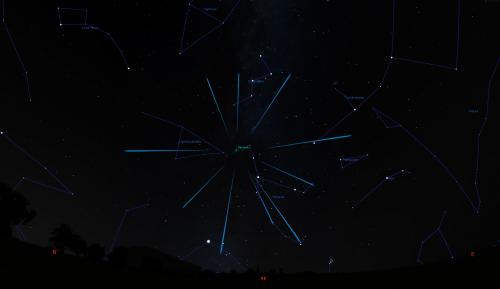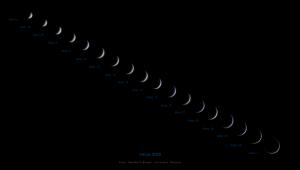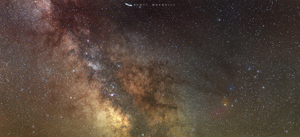Celebration of Space - August 11, 2023
This weekend the annual Perseid Meteor Shower peak is happening. The Perseid Meteor Shower is probably the third best meteor shower of the year, but because it happens during the warm summer nights, it is certainly the most popular. In 2023, forecasters are predicting a higher than average number of meteors coming out of this shower. Usually, we can expect an increase in regular meteor activity by about 100 meteors from the Perseids. The radiant point of the shower is the star Miram in the constellation Perseus, which is where the shower gets its name from. Overnight Saturday, August 12-13 will be the best night to watch, though at Frosty Drew we have observed that the following night is nearly as active. Weather for the 12-13th is not looking all that spectacular, but tonight is looking quite nice as well as Sunday night. So step outside tonight and again on Sunday night for an hour or so around midnight, look to the top of the sky and catch a few shooting stars streaking by. Read up on the Perseid Meteor Shower.
This coming Sunday, August 13, 2023, Venus will reach the point in its orbit where it will pass between Earth and the Sun. This is called Inferior Conjunction, and will place Venus at its closest point to us for the year. Since Venus’ orbit is inclined 3.4° to the ecliptic (path the Sun takes across the sky, and the plane of the Solar System), Venus will not pass directly into the light path of the Sun to Earth, meaning that we will not see Venus cross the visible area of the Sun, which we call a transit. The next time that will happen will be in 2117. Once inferior conjunction completes, Venus will move into western elongation, which will place Venus on the side of the Sun where it will start becoming visible in the morning hours before sunrise, and Venus will reclaim the moniker: The Morning Star. If planning to observe Venus during inferior conjunction, we highly recommend against it unless you are a professional observer! Venus will be so close to the Sun that the slightest misalignment or even bonk of the telescope could result in a direct view of the Sun, which will cause permanent blindness in the eye that was at the telescope. Regardless, keep up with images online of the event, as that will give you the safest viewpoint. What you will see is Venus’ atmosphere being illuminated by the sunlight as a ring around the planet. Check out this image of Venus during the inferior conjunction of 2020, that I captured for Brown University.
Speaking of conjunctions, this coming Wednesday, August 16, 2023 at 5:39 am, the Moon will orbit into a position where it is between the Sun and Earth, which is called Conjunction, but everyone else calls it the new Moon. On this day, the Moon will rise and set with the Sun, which results in the entire nighttime period being Moon free. Since we are still in Milky Way viewing season, this would be a great night to be out to observe. In any case, the weeks around the new Moon are also quite good opportunities to be out under the stars due to the crescent lunar phases. Take a moment on Wednesday night to step outside after twilight wanes and catch a view of the sky. That is if you do not live in the city.
Over the last week, we have had some excellent viewing opportunities of China’s space station – Tiangong passing over during the evening hours. Well nightly passes will continue through this weekend and into next week for our viewing pleasure. Here are several notable pass viewing opportunities for the coming nights:
Fri, Aug 11 at 9:41pm, starting in the W, passing directly overhead and into orbital sunset ← Awesome pass!
Sat, Aug 12 at 8:42 pm, starting in the W, rising to 85°, heading towards the E, and into orbital sunset ← Awesome pass!
Sun, Aug 13 at 9:20 pm, starting in the W, rising to 73°, heading towards the SE and into orbital sunset ← Awesome pass!
Mon, Aug 14 at 8:21, starting in the W, passing directly overhead, heading towards the E ← Awesome pass!
Tue, Aug 15 at 8:58 pm, starting in the W, rising to 51°, heading towards the SE, and into orbital sunset
Thu, Aug 17 at 8:37 pm, starting in the W, rising to 33°, heading towards the SE, and into orbital sunset
Check out that list of awesome passes! These are certainly not to be missed. So put these times on your calendar and set your alarms because Tiangong has grown quite large and is now one of the brightest satellites to pass over. For daily pass times of Tiangong and other bright satellites, visit the Frosty Drew Daily Satellite Pass Prediction Utility.
- Author:
- Scott MacNeill
- Entry Date:
- Aug 11, 2023
- Published Under:
- Scott MacNeill's Columns




